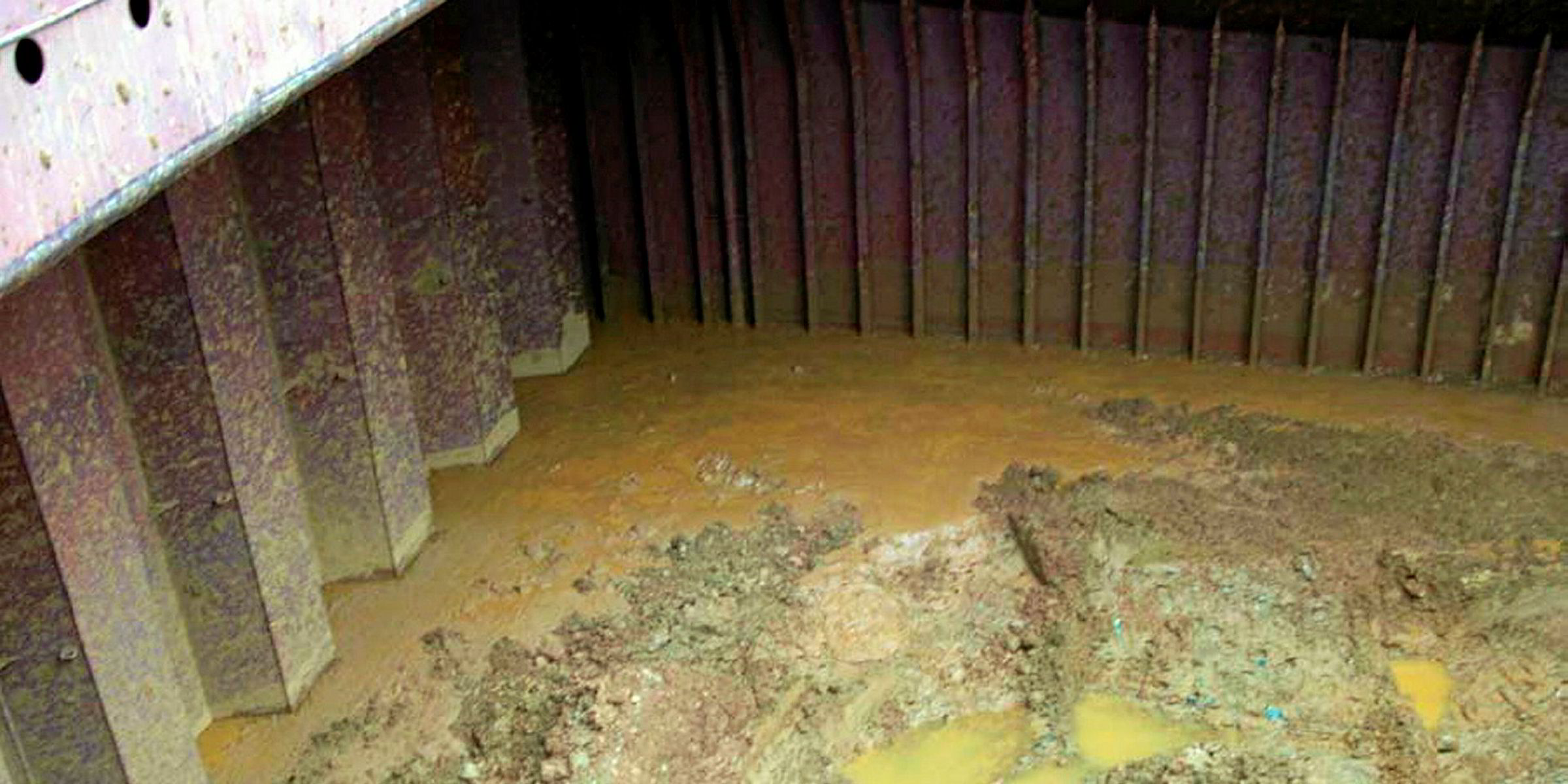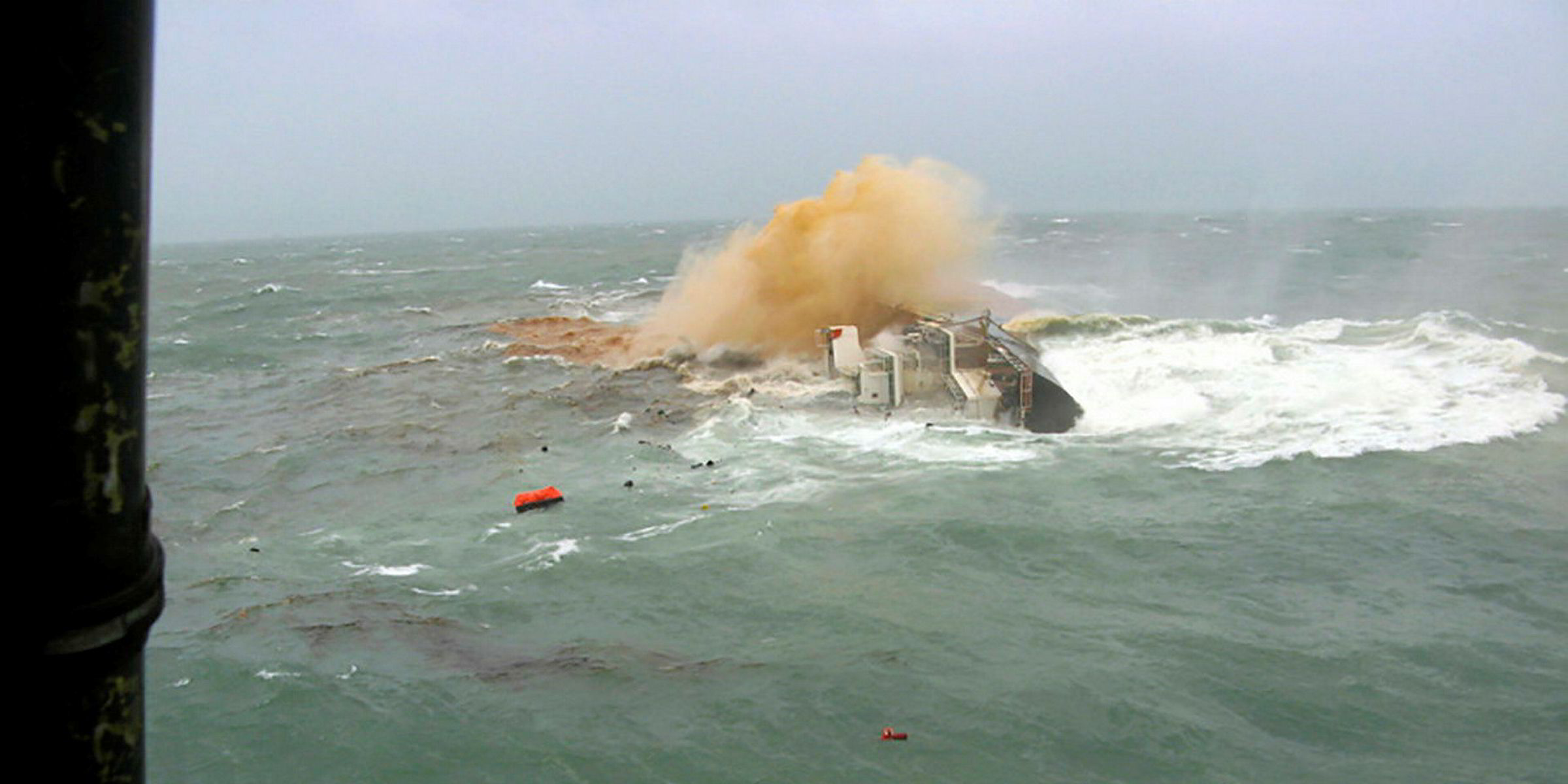Cargo liquefaction has claimed more than 100 seafarers' lives over the past decade, according to figures produced by dry bulk industry association Intercargo.
Its latest Benchmarking Report highlights that 101 seafarers died in liquefaction losses in the decade between 2007 and 2016.
However, its figures do not include the loss of the 57,000-dwt Emerald Star (built 2010) in 2017 — a year beyond the scope of the report — in which a further 10 lives were lost, bringing the total death toll to 111 over the past 11 years.
The 2007 to 2016 fatalities were linked mainly to six cases of cargo liquefaction involving the transportation of nickel ore from Indonesia to China. However, there were other instances of liquefaction, Intercargo reports.
Two cases involved the transportation of laterite — or clay iron ore — from India to China. Another involved a bauxite cargo on the 56,000-dwt Bulk Jupiter (built 2006).
“Overall, cargo shift and liquefaction remains a major concern in the dry bulk sector,” Intercargo said.
Its figures suggest that liquefaction is now by far the biggest single cause of loss of life in the dry bulk industry.
Between 2007 and 2016, a total of 209 lives were lost in 59 bulker losses, meaning liquefaction accounts for nearly half the deaths in the sector.
The next largest cause of loss of life in the period was flooding, accounting for 27 lives, followed by fire and explosion, which claimed 16 lives.
However, the structural problems that led to significant loss of life and ships in the 1990s and early 2000s no longer seem to be a major safety issue for the dry bulk industry. Only one loss was attributed to structural failure in the period, with no loss of life.

That may change, however, when Intercargo considers the industry’s 2017 casualty record. A Marshall Islands flag state accident investigation into the loss of the 266,141-dwt VLOC Stellar Daisy (built 1993) is expected to attribute the sinking to structural failure.
Intercargo’s study of casualty investigations of losses between 2007 and 2016 finds that only 26 of the 59 total losses it had identified were investigated and the final reports submitted to the IMO’s Global Integrated Shipping Information System, which houses a central database of flag state accident reports.
Intercargo reveals that Cyprus, Belize, Mexico, Mongolia, Vietnam, Comoros and China had all failed to file accident reports into bulker losses.
And there was a wide disparity in the time it took flag states to complete investigations. While IMO guidelines require an accident report to be filed within a year of a serious casualty, not many met that target.
The top performer was the Bahamas ship register, which produced its one accident report into a bulker loss within seven months.
However, Malta took on average 42.7 months to produce each of three reports into bulker losses.
Cyprus took 42 months to produce just one report out of four total losses to ships under its flag. It failed to report on the remaining three.
On a more positive note, the number of lives being lost in dry bulk shipping is in long-term decline and the sector’s safety record is improving.
From 1994 to 2003, an average of 52 lives were lost each year in bulker losses.
Between 2007 and 2016, that figure had more than declined to an annual average of 21 seafarers' lives lost.
The average annual number of ships lost has also fallen from 10.5 to 5.9 over the same period.



